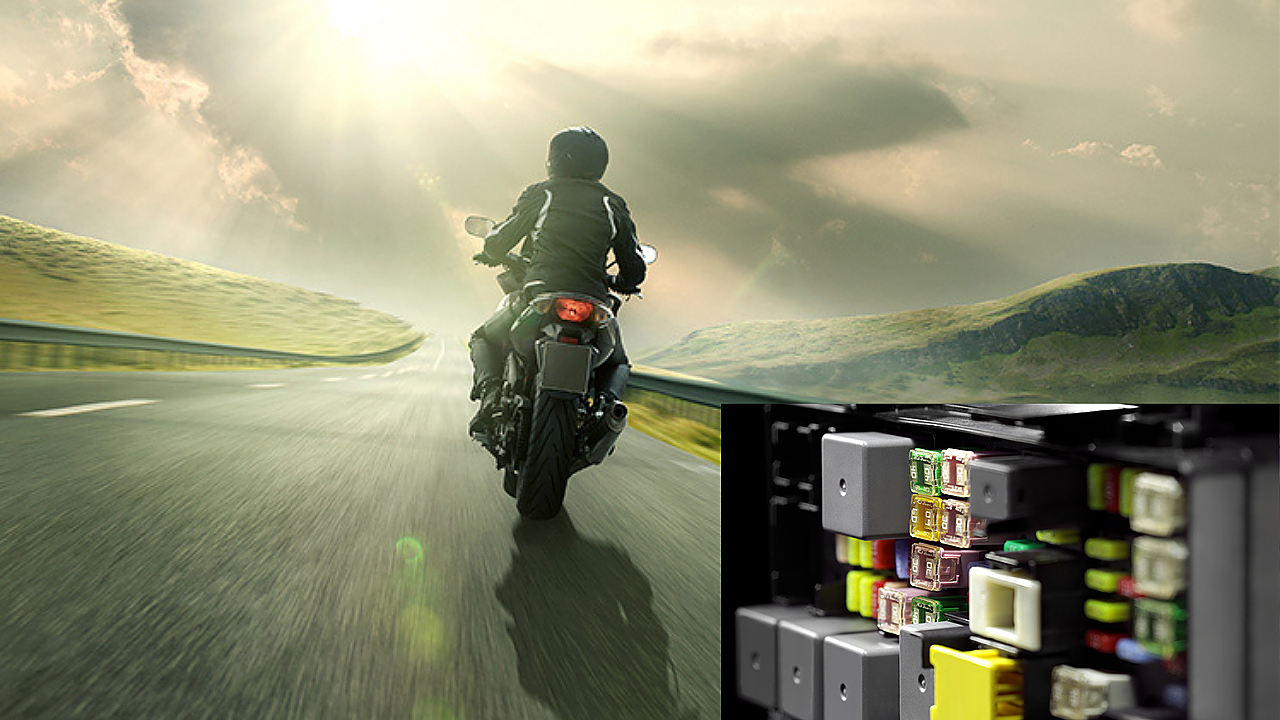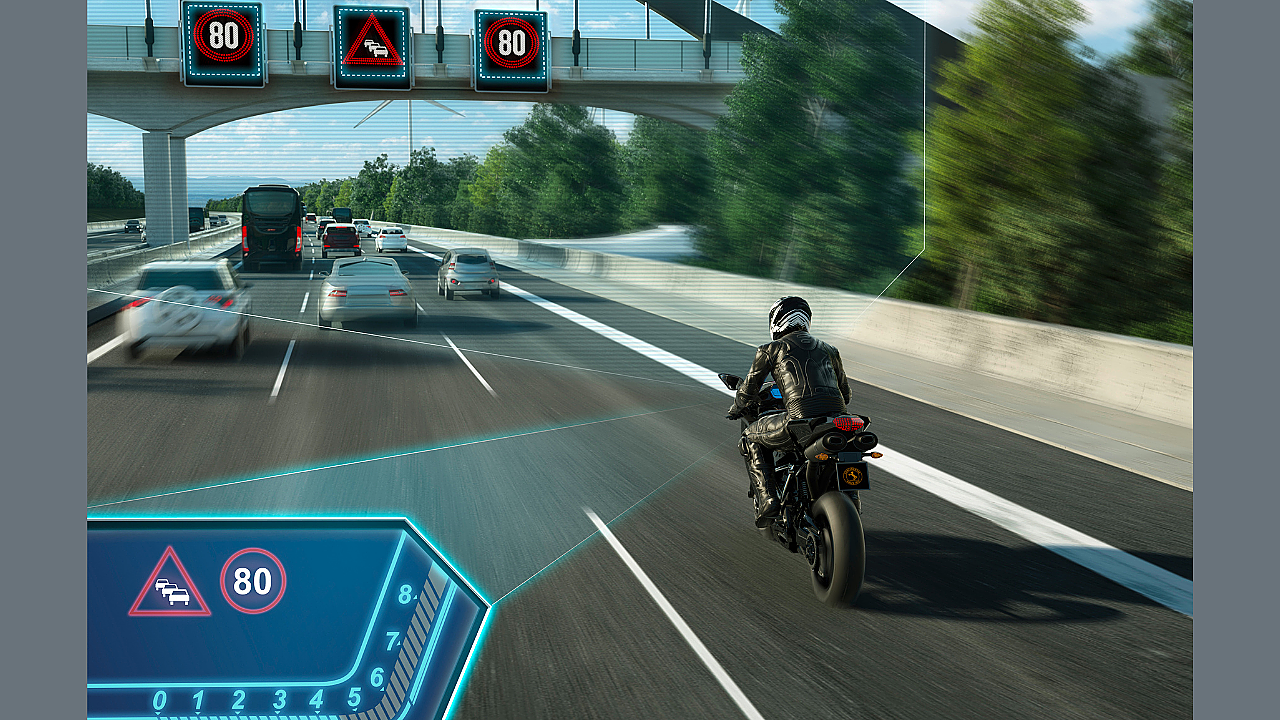
India is the largest two-wheeler market in the world, and no doubt that it is poised to grow further, even if the electric two-wheelers gain significant inroads. However, the two-wheeler riders are the most vulnerable on the Indian roads.
As per the Ministry of Road Transport and Highways’Highways’ report published in 2020, around 37% of those killed in road accidents in 2019 were two-wheeler riders. Since 2019, the legislation mandated ABS (Anti-lock Braking Systems) for 2-wheelers above 125cc has aided better controllability, stability, and steerability for the riders to support safe braking on roads. Some crucial technologies further enhance rider safety in critical riding manoeuvres.
Technology company Continental has been delivering affordable and intelligent safety technologies to ensure Vision Zero - A future with zero fatalities, zero injuries, and zero crashes.
According to Krishan Kohli, Head of Vehicle Dynamics (VED) and Hydraulic Brake Systems (HBS), Continental, the Indian 2-Wheeler market is growing swiftly, for which manufacturers are constantly looking at higher safety standards and technologies to tackle an equally high number of on-road fatalities. The company has been supporting the market with reliable safety technologies, which are further complemented by its localisation strategy. Believing that road safety is everyone’s right, the company is at the forefront of innovation, adapting globally proven technologies for local market needs.
Optimised Curve Braking
The unique feature from Continental helps riders apply brake in curves or turns where there is a high tendency of fall due to wheel lock. The ABS brake system takes the angled position of the motorcycle (using lean angle information from the continental sensor box) into account. Depending on the incline, the ABS control becomes highly sensitive to prevent wheel lock while providing good braking and steering, improving vehicle handling in curves and making the braking process safer.

Traction Control System
The technology helps reduce the tire slip on the driven wheel on slippery roads and surfaces while accelerating. It helps accelerate and manoeuvre efficiently and adequately, making the riding safe. The system uses the wheel speed sensor information to monitor if the rear wheel is spinning faster than the front wheel. Once the speed difference is sensed, the traction control system helps to reduce the engine torque on the spinning wheel, thereby limiting the chance of slipping or skidding.
An extension function Electronic Drag Controlfeature, helps control the excessive wheel slip caused due to engine drag torque, eventually increasing vehicle stability. It tends to realise the best balance between vehicle stability and deceleration in engine drag situations by controlling vehicle drag torque and, therefore, the propulsion at the wheel appropriately.
Front Lift Protection
Front lift protection (FLP) helps safeguard the vehicle from backward roll over and fall because of excessive drive torque. The function monitors the wheel behaviour to detect a liftoff situation and swiftly adjust engine torque, thereby having the proper propulsion at the wheel to stop backward roll over and fall.
Motorcycle Hold & Go
This convenient function helps the rider hold the bike uphill or downhill stop without having to hold the brakes continuously. In addition, it lets the rider relax, work on navigation or maps, take calls, etc. The function is activated by a special hand lever application by the rider, thus indicating the system to lock the front wheel.
TPMS
Maintaining optimal tyre pressure is crucial for the safe riding and braking performance of 2-Wheelers. The Tyre Pressure Monitoring System (TPMS)measures the tyre pressure using a sensor, transmits the reading, and displays it to the rider. The company’s Deflation Detection Systemis designed to work without sensors and provide rider alerts of a critical situation.
The technology company is working on a few other advanced technologies under Advanced Rider Assistant Systems) for 2-Wheelers. For example, the Blind Spot Detection (BSD) solution monitors blind spots for the rider on the adjacent lanes with a radar sensor and can provide visual warnings to the rider in case of any approaching vehicles. As an enhancement, this system can also indicate hazardous lane changes through the Lane Change Assist feature. Rearward-facing radar sensors scan the road area behind and next to the motorcycle, providing a warning if a lane change is not recommended at a given point in time.
The Forward Collision Warning (FLW) feature alerts the rider by giving a visual warning when the system detects a high risk of a collision with the vehicle in front by using a front radar sensor.

The Adaptive Cruise Control enables motorcyclists to have a more relaxed and safe riding experience for long journeys. This intelligent function always ensures a safe distance to the vehicle in front and a smooth ride at the same time. It detects relevant objects in front of the vehicle by a radar sensor, even when riding in an inclined position, and automatically corrects the motorcycle’s speed.
Finally, the Emergency Brake Assist is one such technology, which takes the Forward Collision Warning one step further, indicating to the rider to take action. The system detects an imminent collision with a vehicle ahead or with an obstacle, first warns the rider, and then supports the rider by initiating the braking manoeuvre.
“As the newer and well-informed generation of consumers are becoming more aware of the safety features, the demand for advanced safety technologies will increase. Going by the trend, we can expect features like traction control, optimised curve braking, FLP, FCW, BSD, and others, to become increasingly prominent in the Indian 2-wheeler market in the course of next years,” Krishan adds.
Localisation
The company’s core strategy for India is localisation, creating an end-to-end value creation starting from marketing, R&D to production and sales. In 2016, Continental had set up assembly lines in Gurugram to assemble ABS and Electronic Stability Control systems for two-wheelers and passenger cars; a couple of years later, it set up production for ABS and Electronic Control Units (ECU) at its Bengaluru plant, increasing localisation content in ABS and ESC. In the subsequent year, the company achieved the production milestone of one million ABS and ESC ECUs at its Bangalore plant. In 2020, Continental reached a milestone of 50 Million Wheel Speed Sensors (WSS) at its Manesar plant.
Apart from increasing production in India, Continental is also innovating to produce technologies driven by local market requirements with an R&D setup. For instance, Continental’sContinental’s MiniMAB product (One-Channel ABS) is developed for smaller motorcycles and scooters. The system prevents the front wheel from locking up, thus avoiding crashes or the vehicle becoming unstable. It is also effective with a mechanical drum brake on the rear wheel. MK100MAB product (Two-Channel ABS) enhances safety by preventing both front and rear wheels from locking on vehicles that have disc brakes on the front and rear wheels. In addition, MK100 MIB product (Two-Channel ABS with Integral Brake Function) provides higher safety and comfort features like MHG, ACC & EBA.